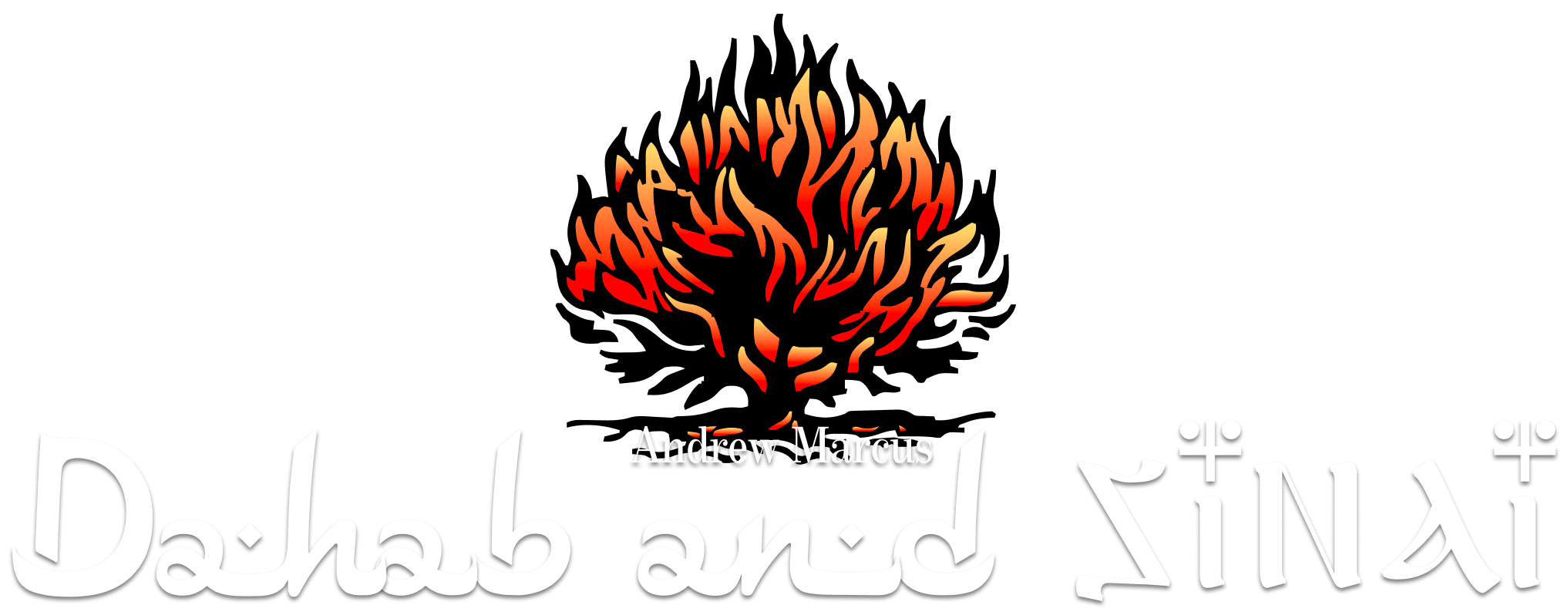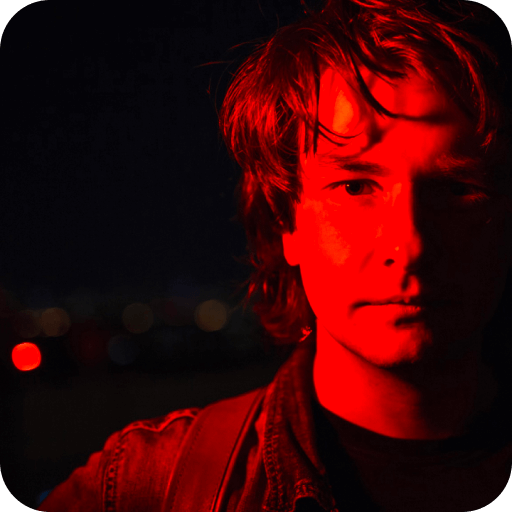Dahab
Egypt is dotted not only with ancient monuments but also with resorts. Usually, tourists come here for an affordable seaside vacation. The two most popular places are Hurghada and Sharm El-Sheikh. Of course, we will skip both of these villages and head to a more interesting place — Dahab.
Dahab is a small town on the Sinai Peninsula, 85 kilometers from Sharm El-Sheikh. Only three thousand people live here.
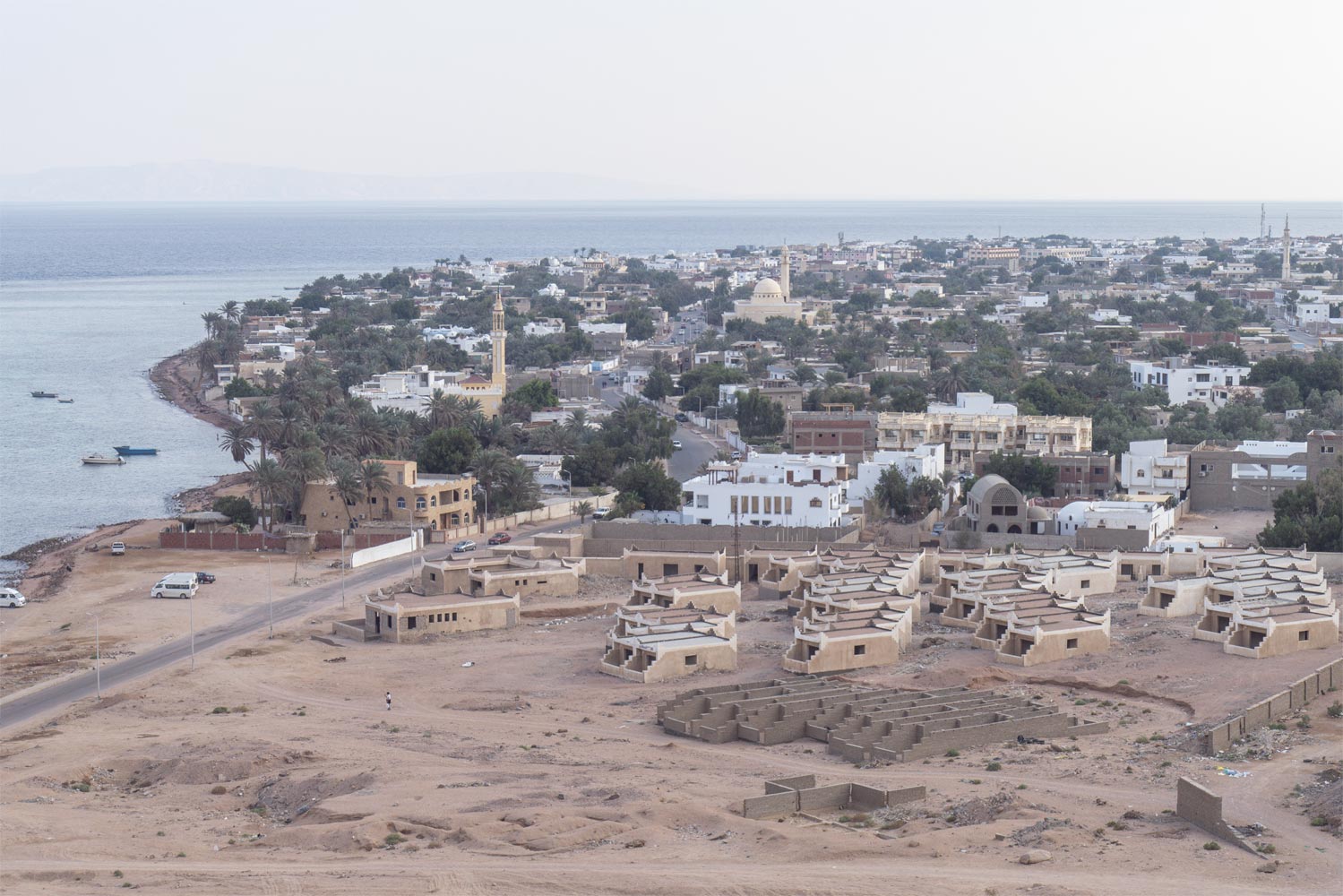
Dahab became famous for the “Blue Hole” — a vertical underwater cave surrounded by a coral reef. This hole proved to be extremely convenient for diving, which led to the formation of a close-knit diving community in Dahab, later joined by windsurfers, kitesurfers, and various other surfers.
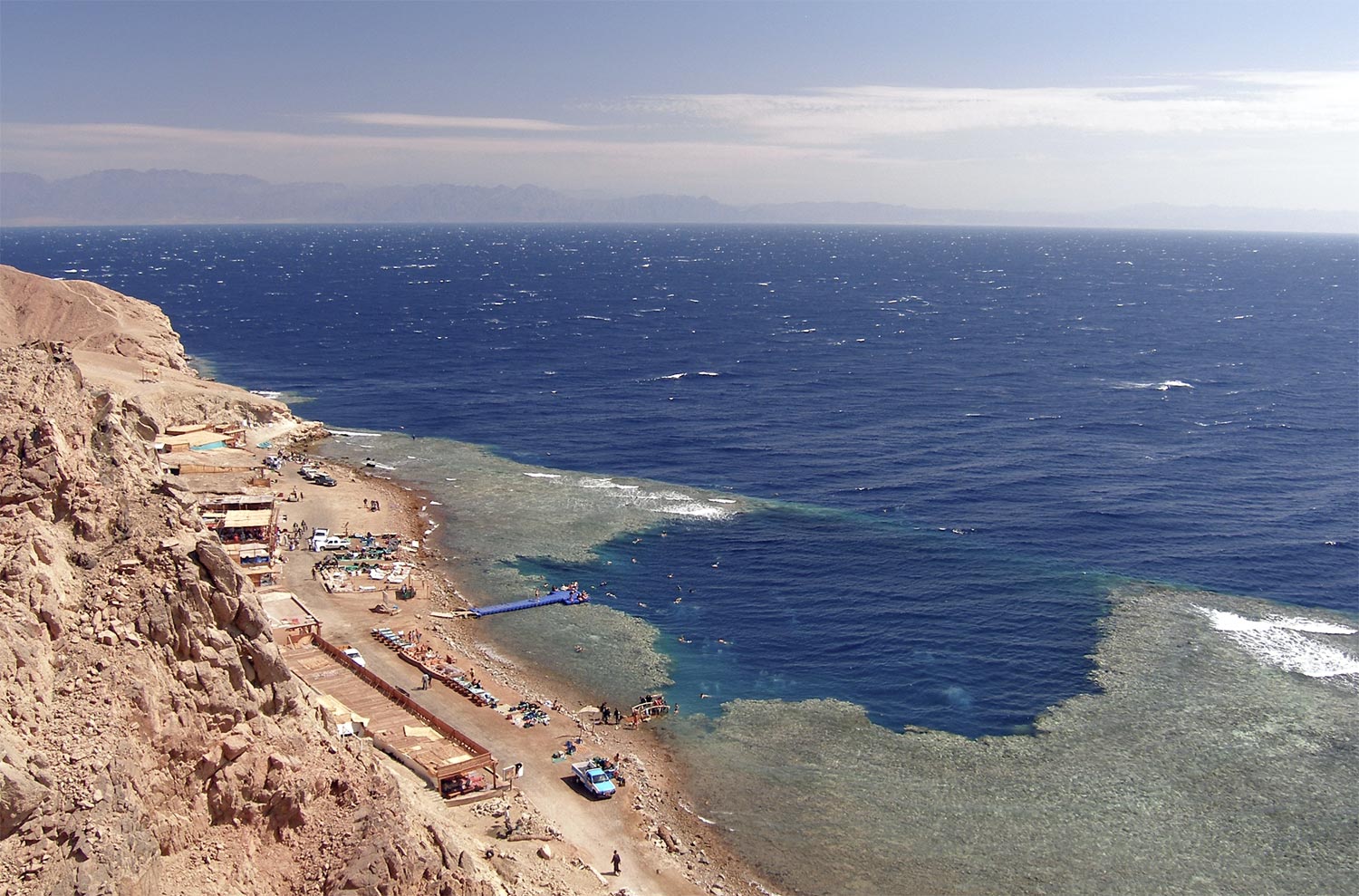
Dahab is indeed teeming with human-amphibians who casually stroll the streets of the town right in their scuba gear.

It feels like every third shop in the city center sells some kind of equipment for diving.
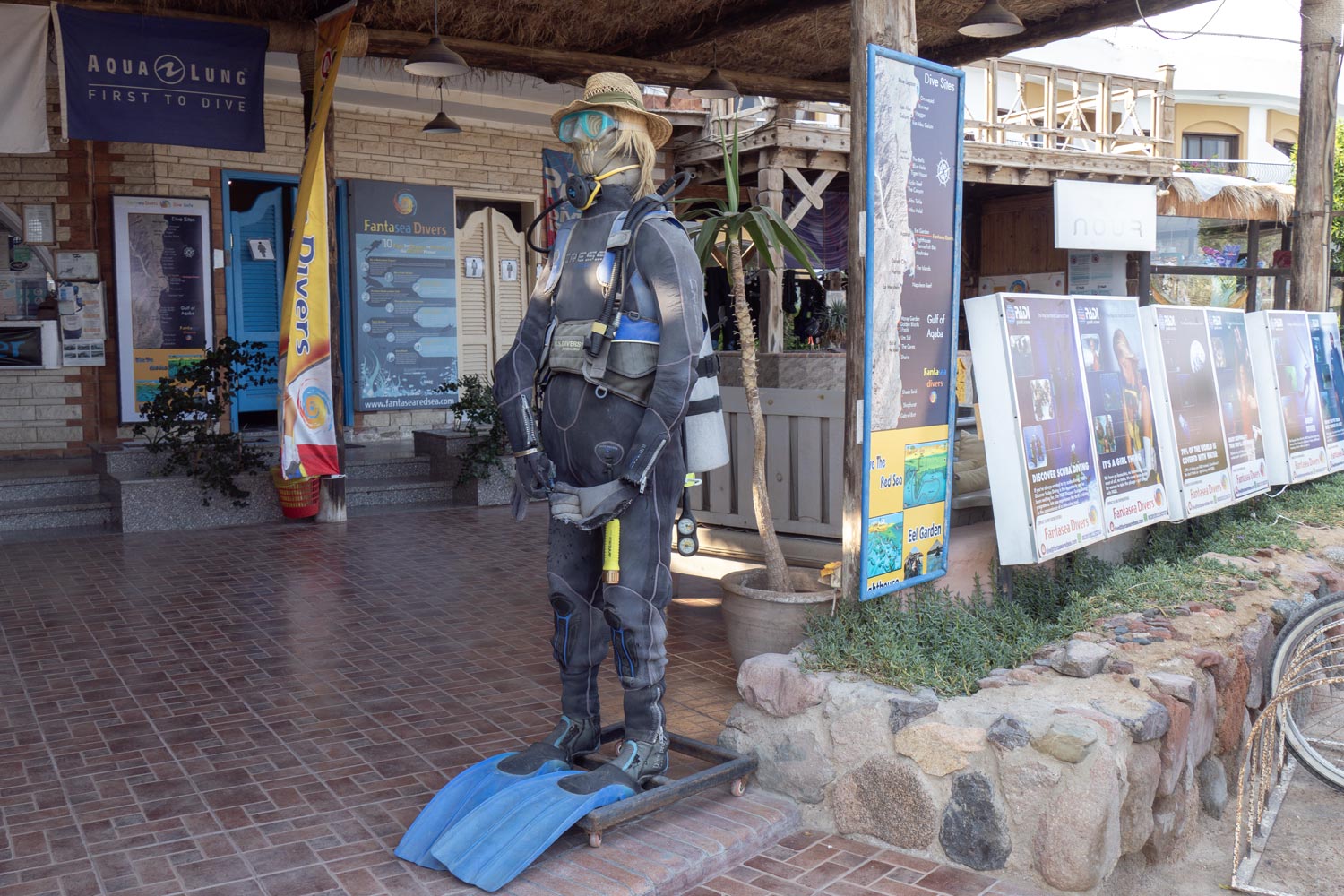
Every corner offers diving lessons or instructor certificates.
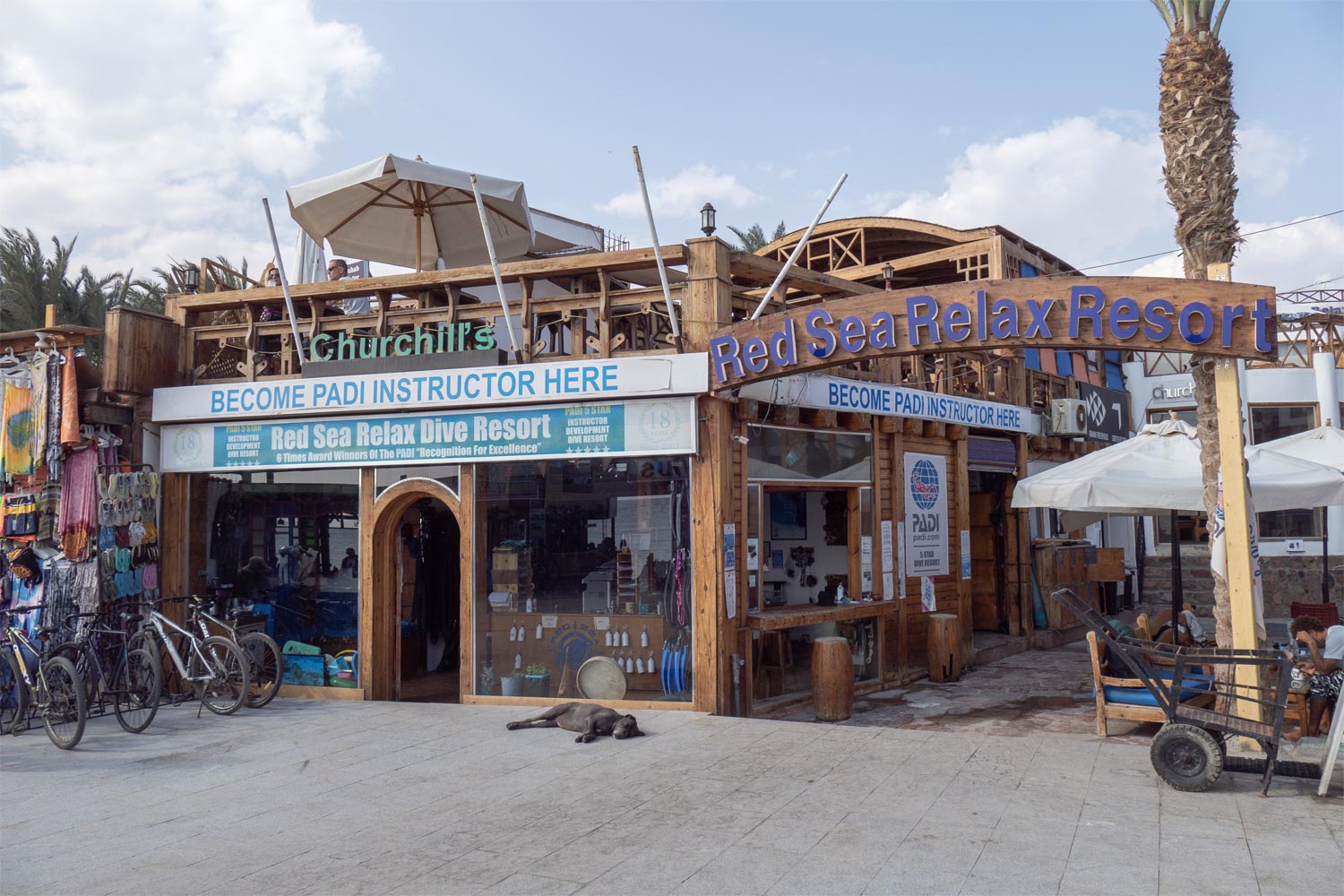
The town is also full of regular boats and motorboats.
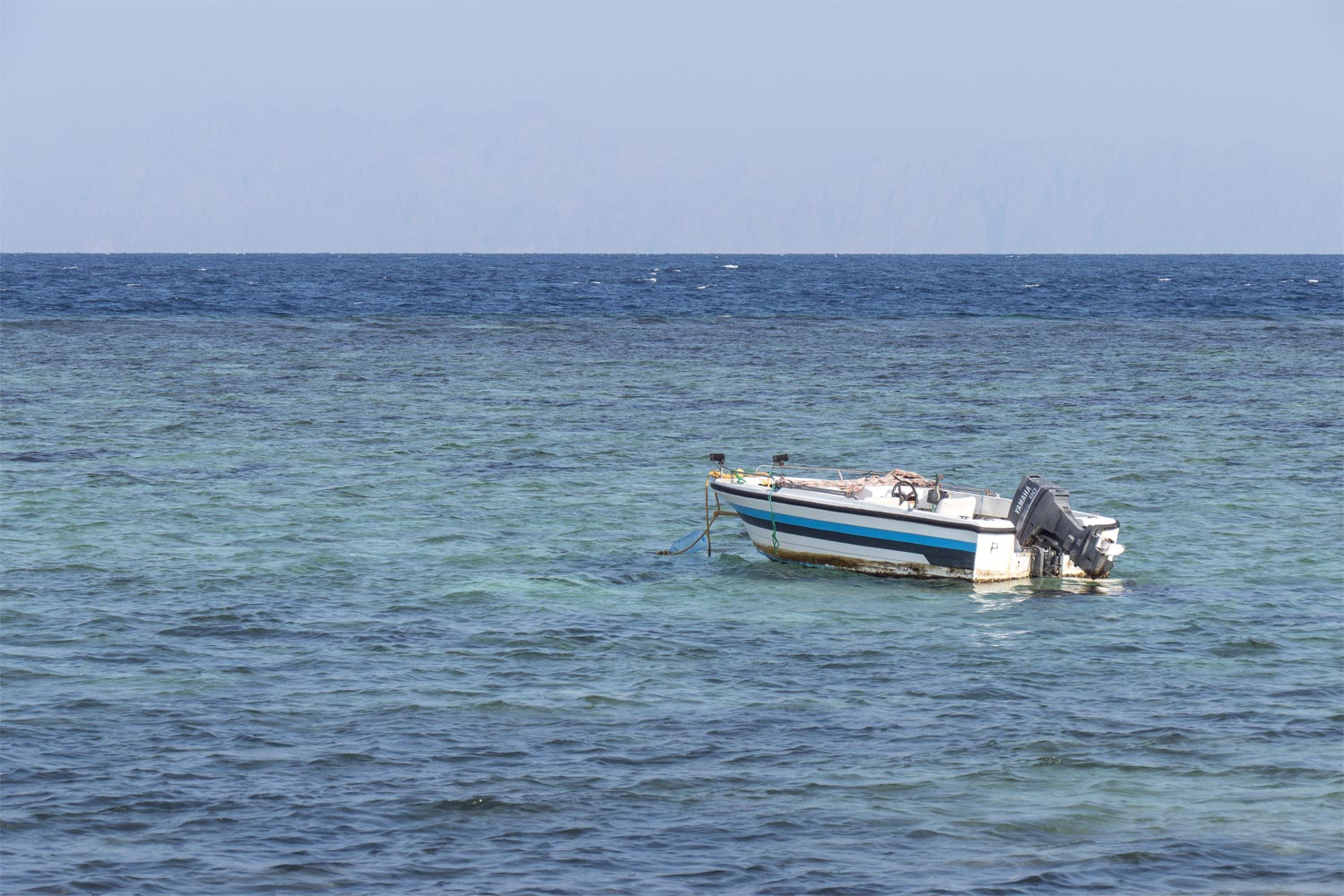
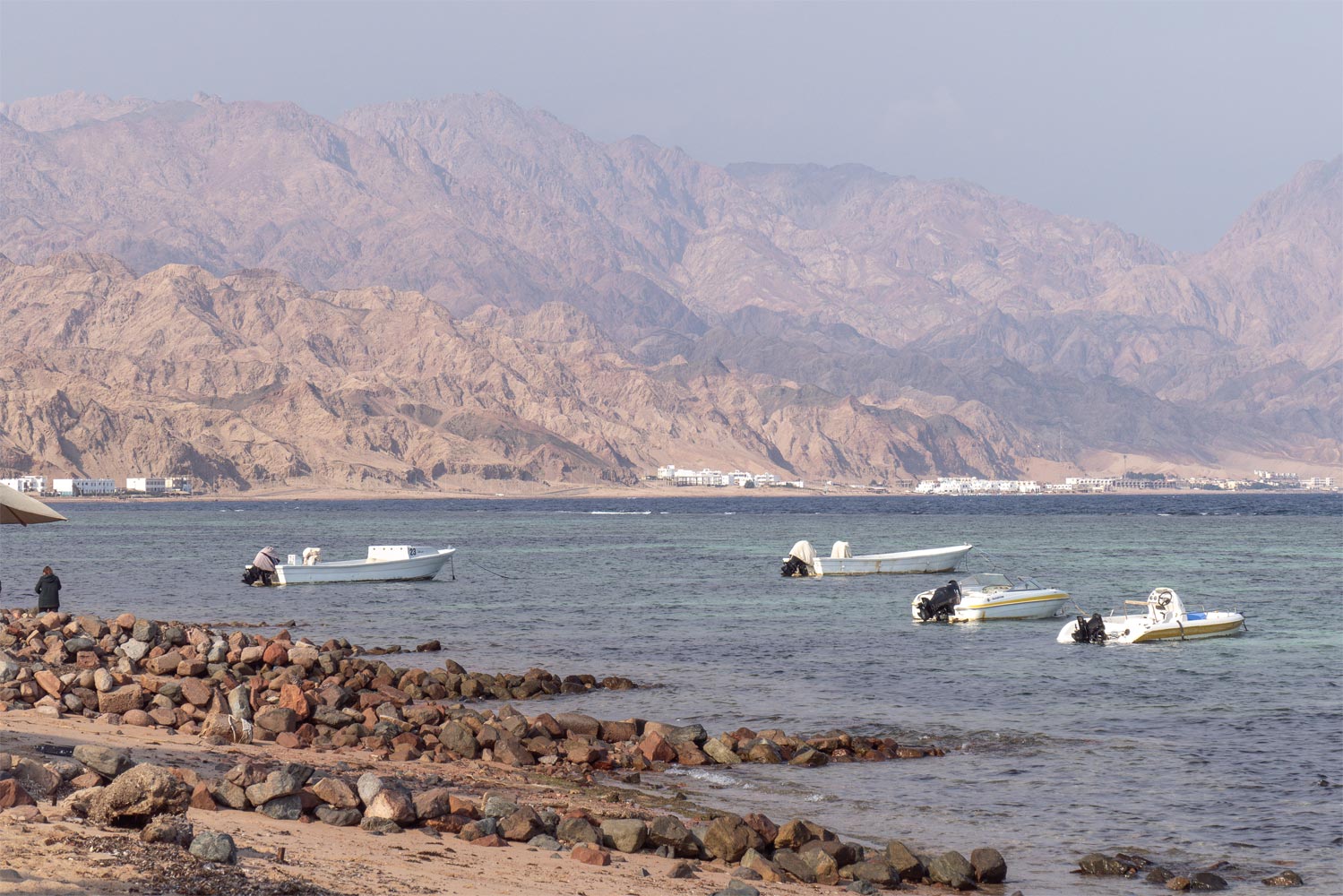
Although the core of the Dahab scene consists of divers and surfers, it’s not necessary to love water for coming here. Dahab is generally a great place for downshifting. It is very quiet and peaceful here.
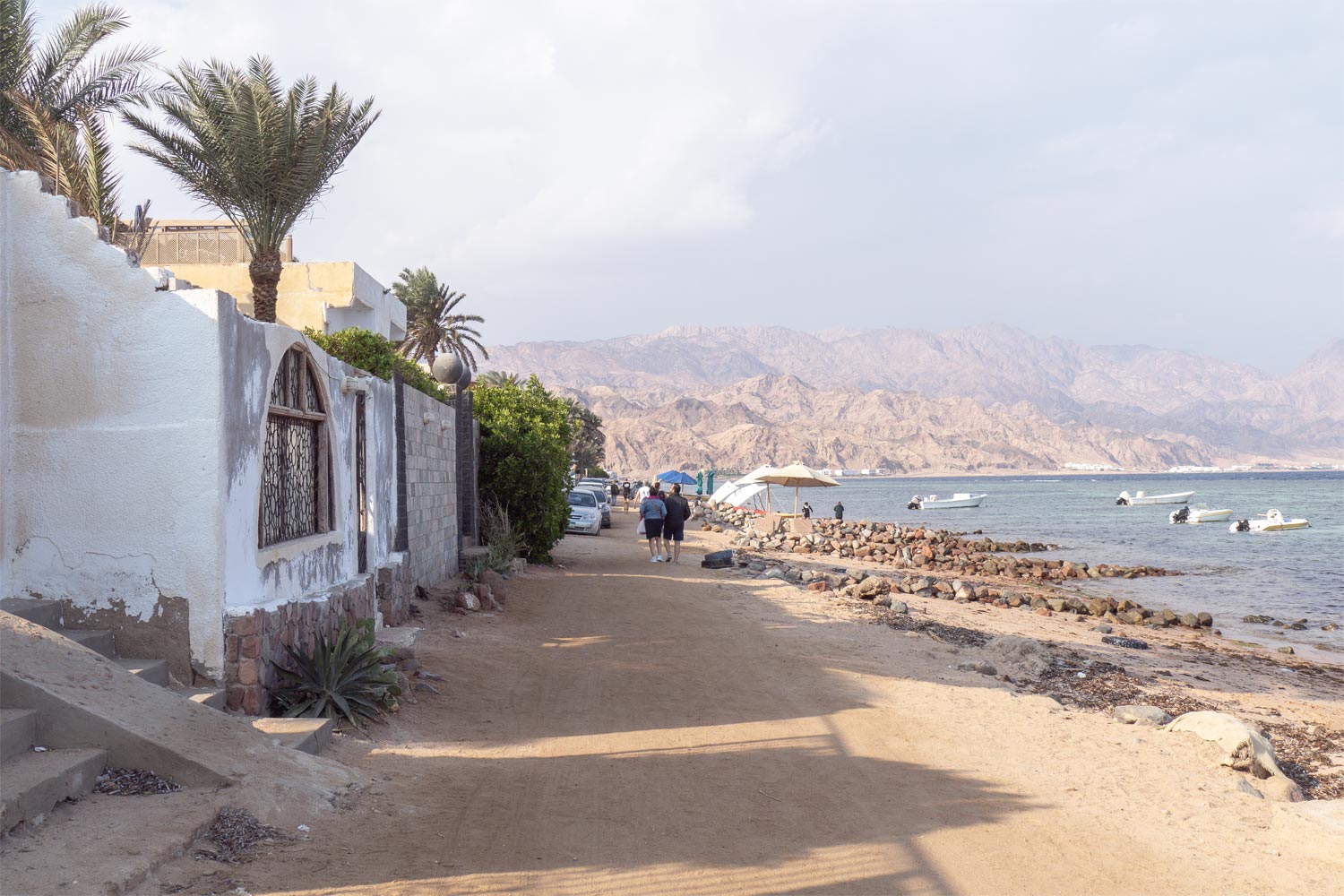
Everyone I met in Dahab answered the question about why they came here in the same way: were tired of everything happening in the big world.
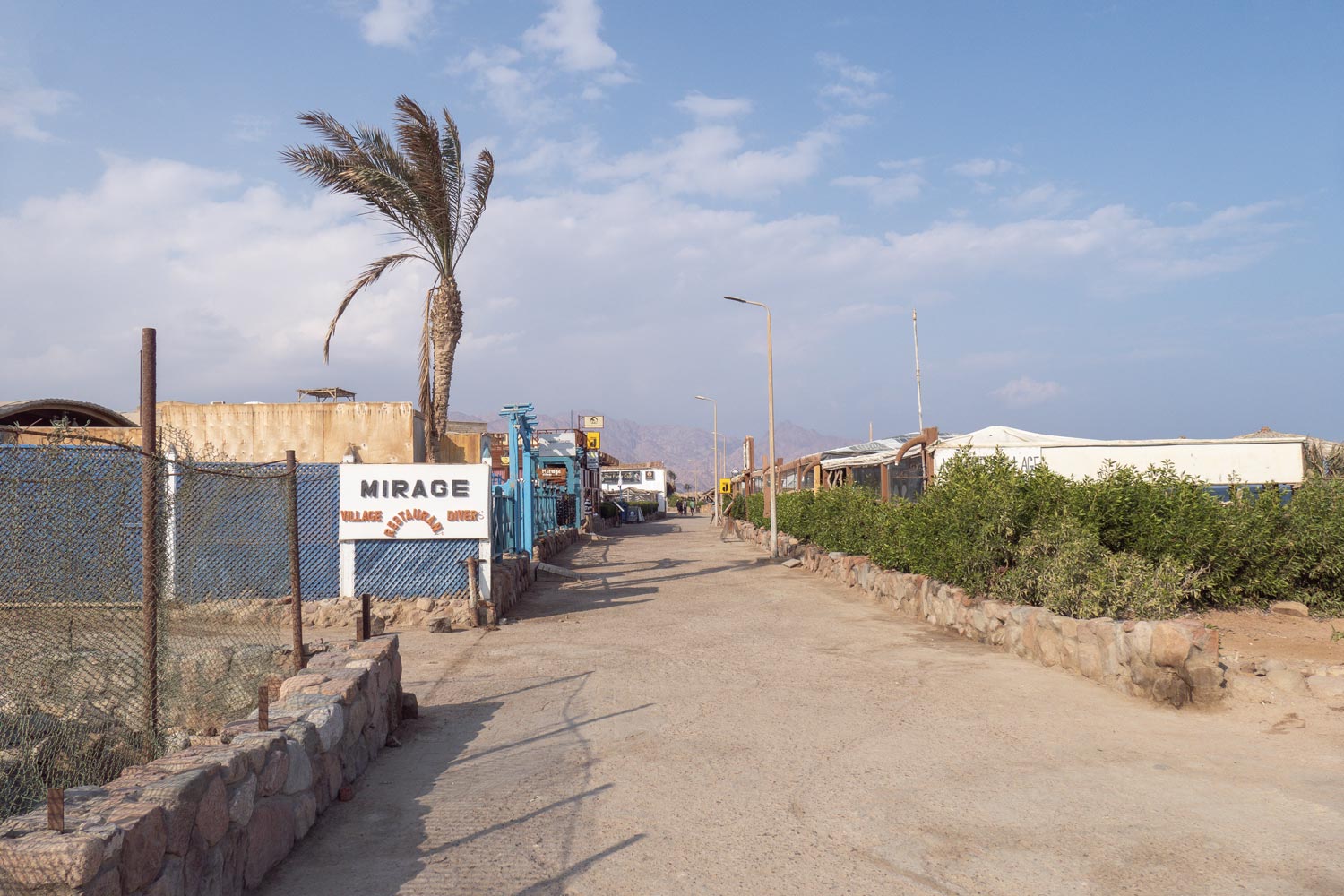
And I completely understand them. Even time in Dahab doesn’t pass but stretches like molasses.
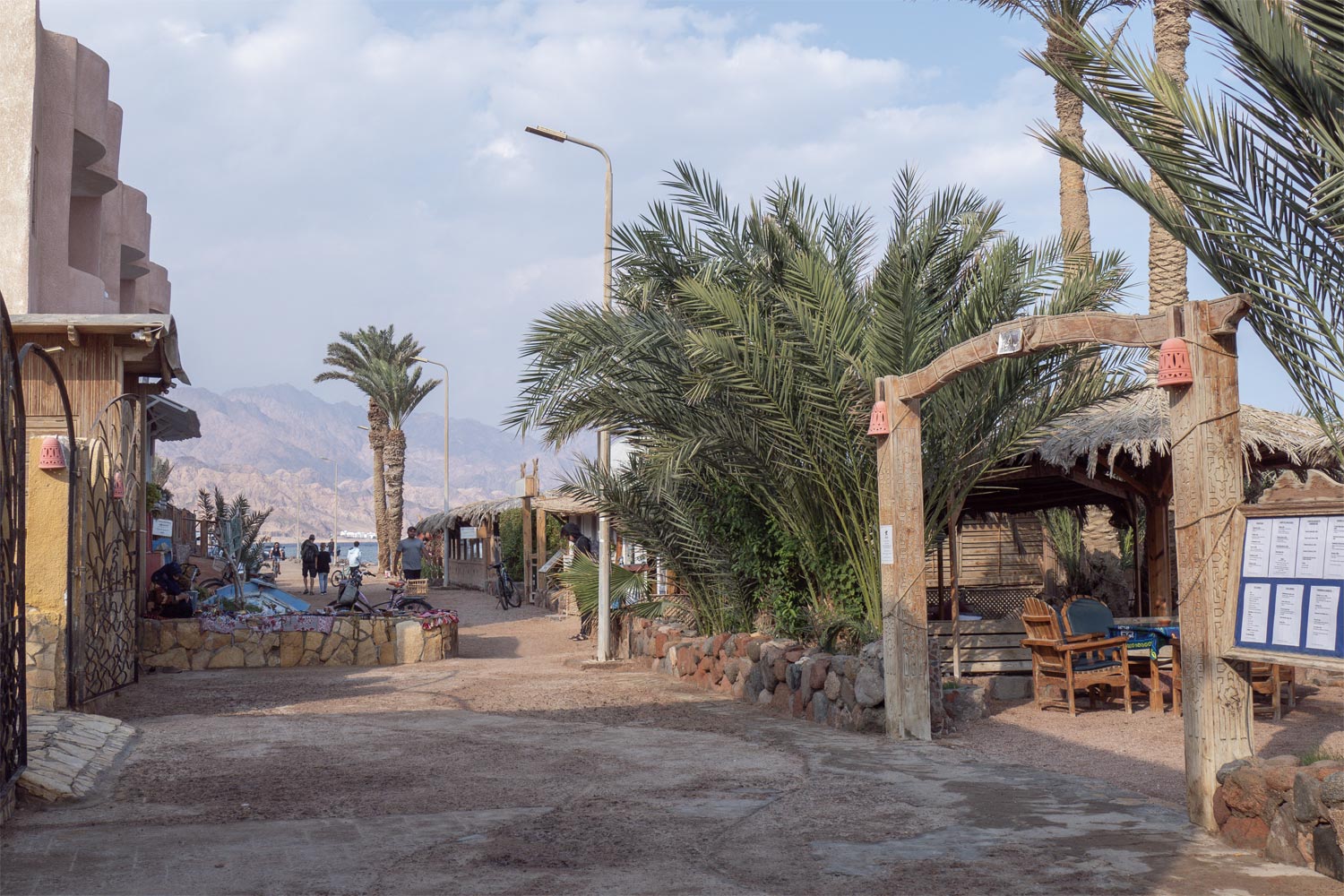
The city’s shoreline is lined with quite pleasant restaurants and cafes. Most of them serve simple but tasty food. Since people come to Dahab from all over the world, you can find European, Eastern, and Russian cuisine here.
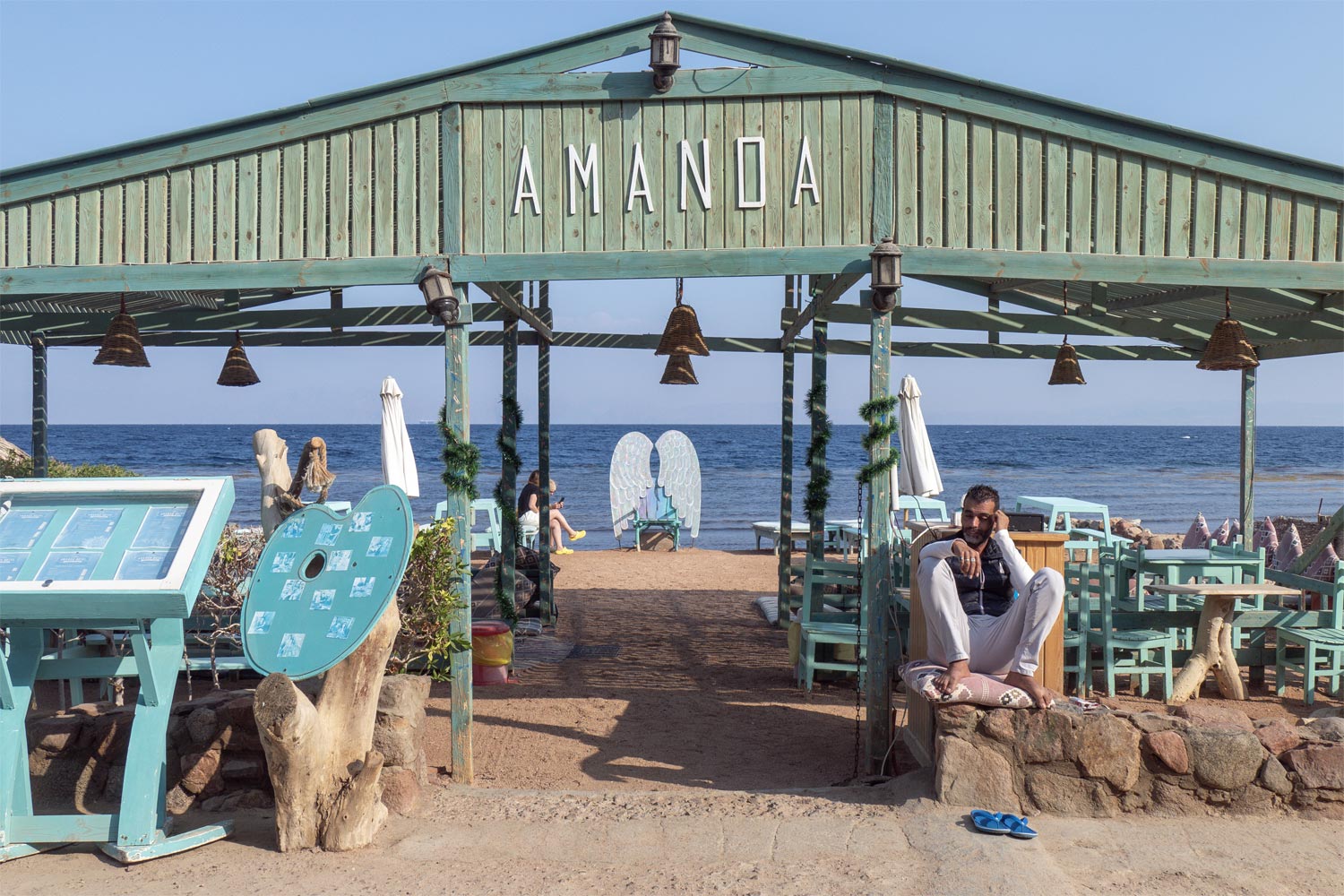
Although Dahab is in Egypt, it is not as hot here as in nearby Sharm El-Sheikh. The mountains surrounding Dahab create winds that carry away moisture and provide coolness. While it can be quite hot in the summer, the climate is pleasant enough for the rest of the year.
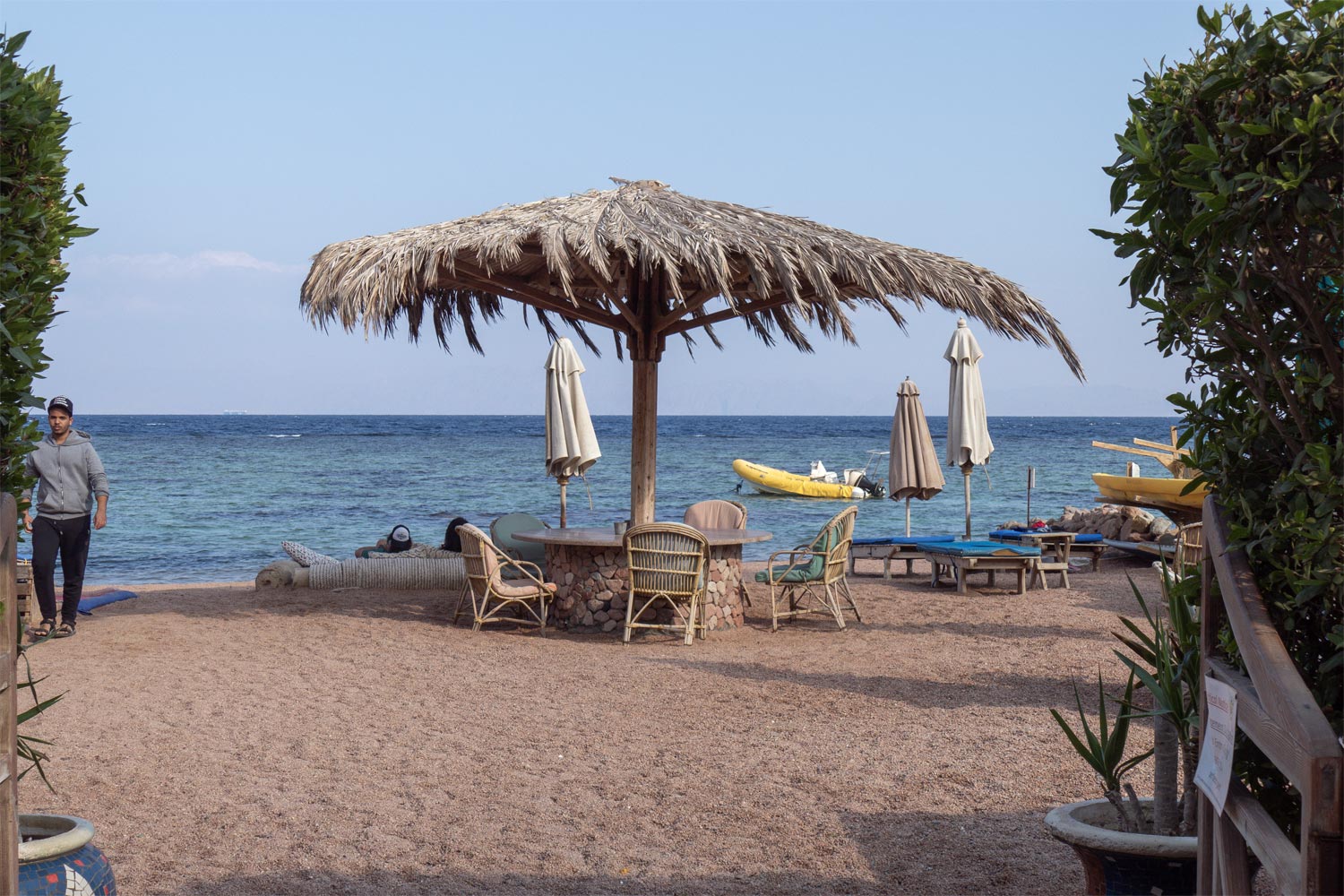
But the main merit of Dahab is its residents. They are not the noisy and pushy locals found in the rest of Egypt. Most of the inhabitants here are Bedouins, or desert nomads. They have a calm disposition and are very friendly. While in Cairo it’s impossible to walk the streets due to constant attempts to extract money from tourists, in Dahab it’s hard to even imagine being in danger.
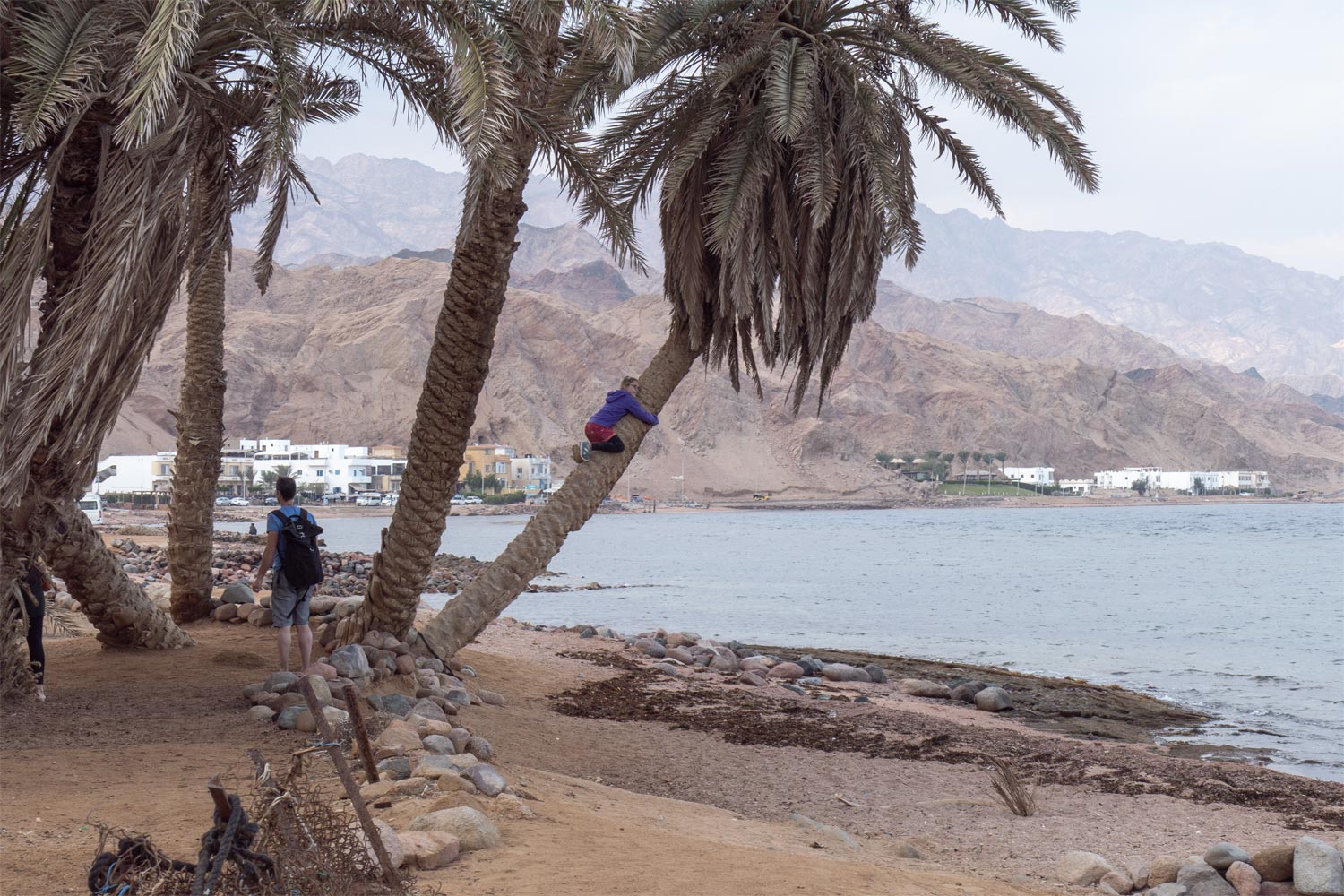
A cozy Dahab house by the Red Sea:
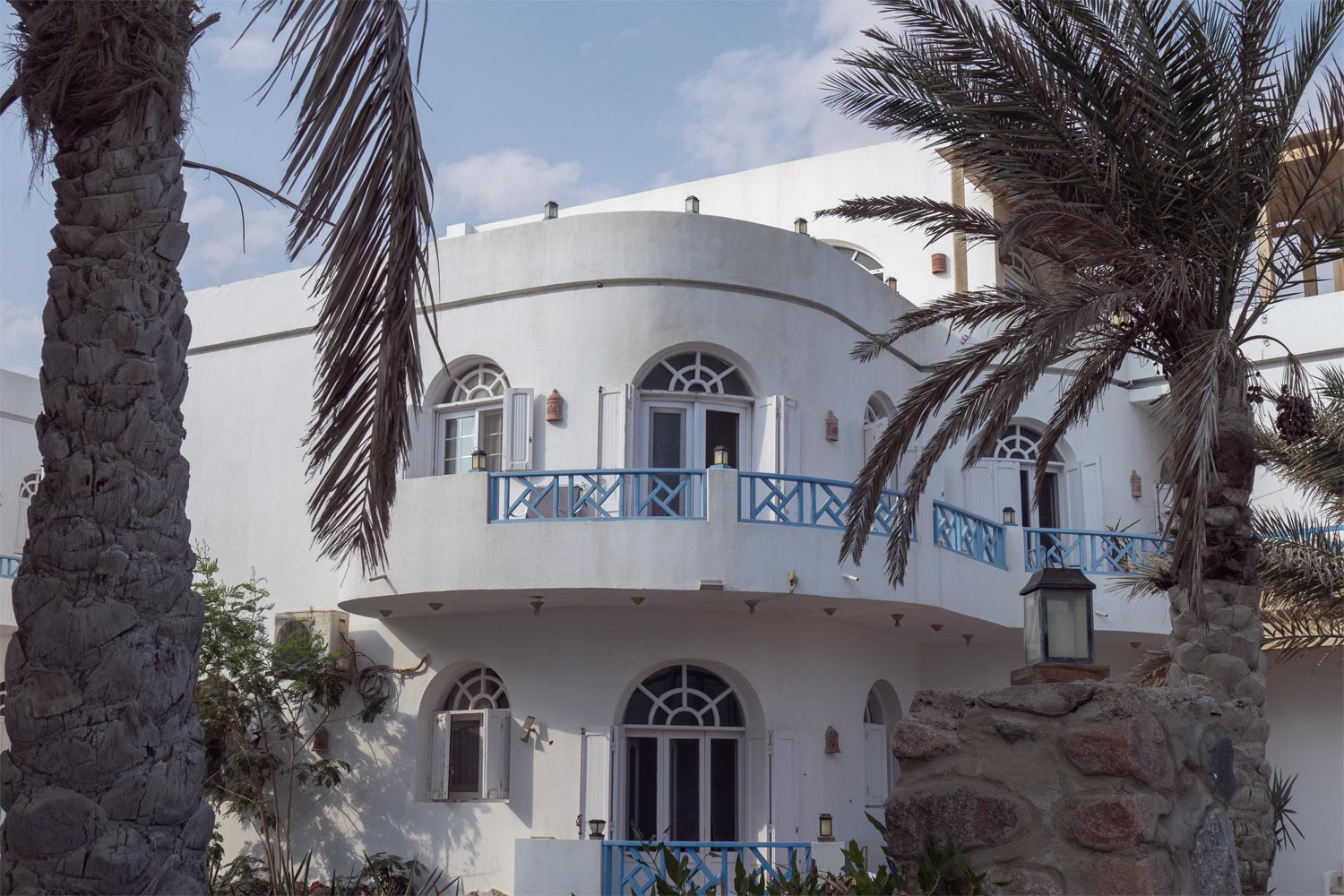
A long promenade on the waterfront:
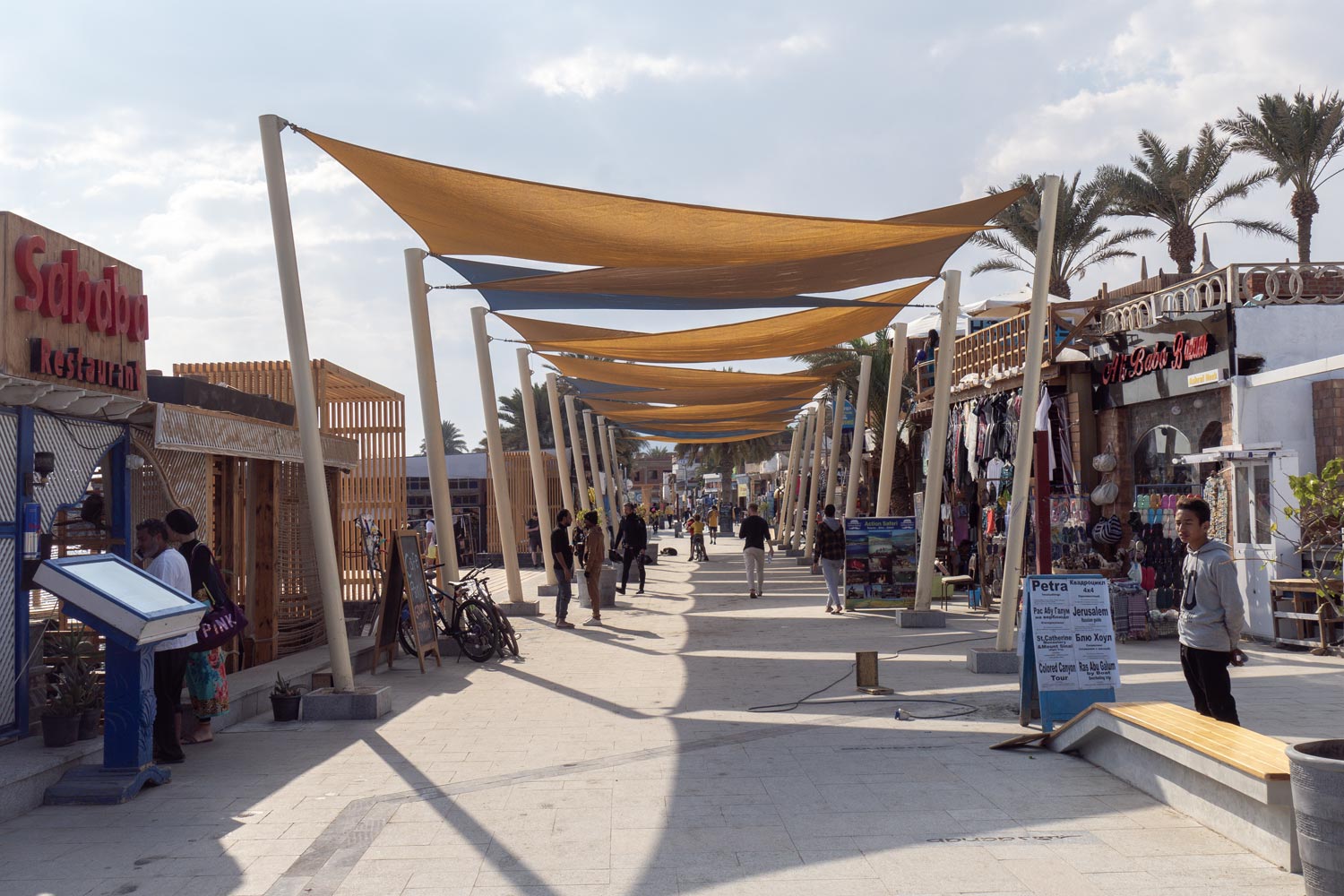
Meat restaurant:
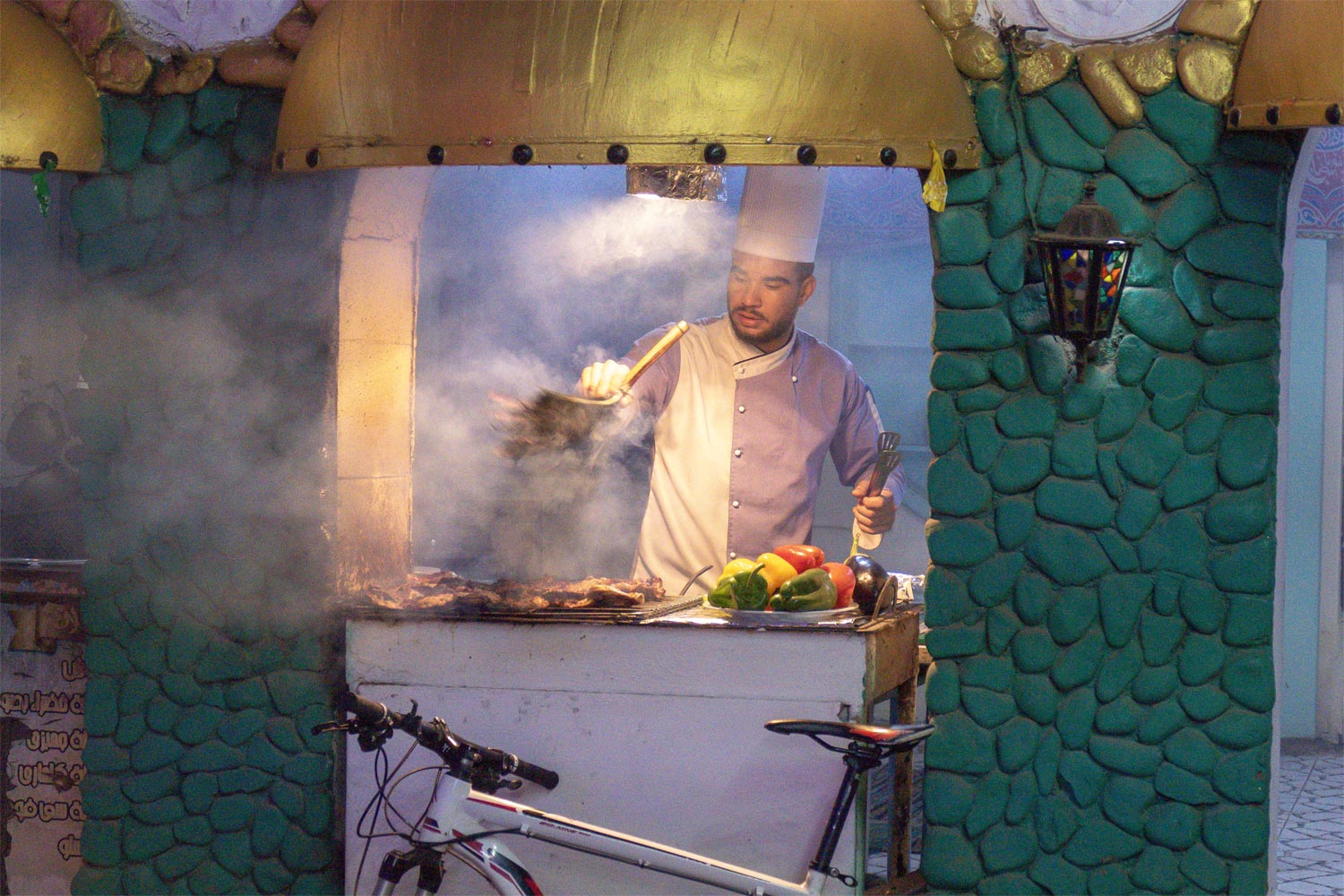
Fish restaurant:
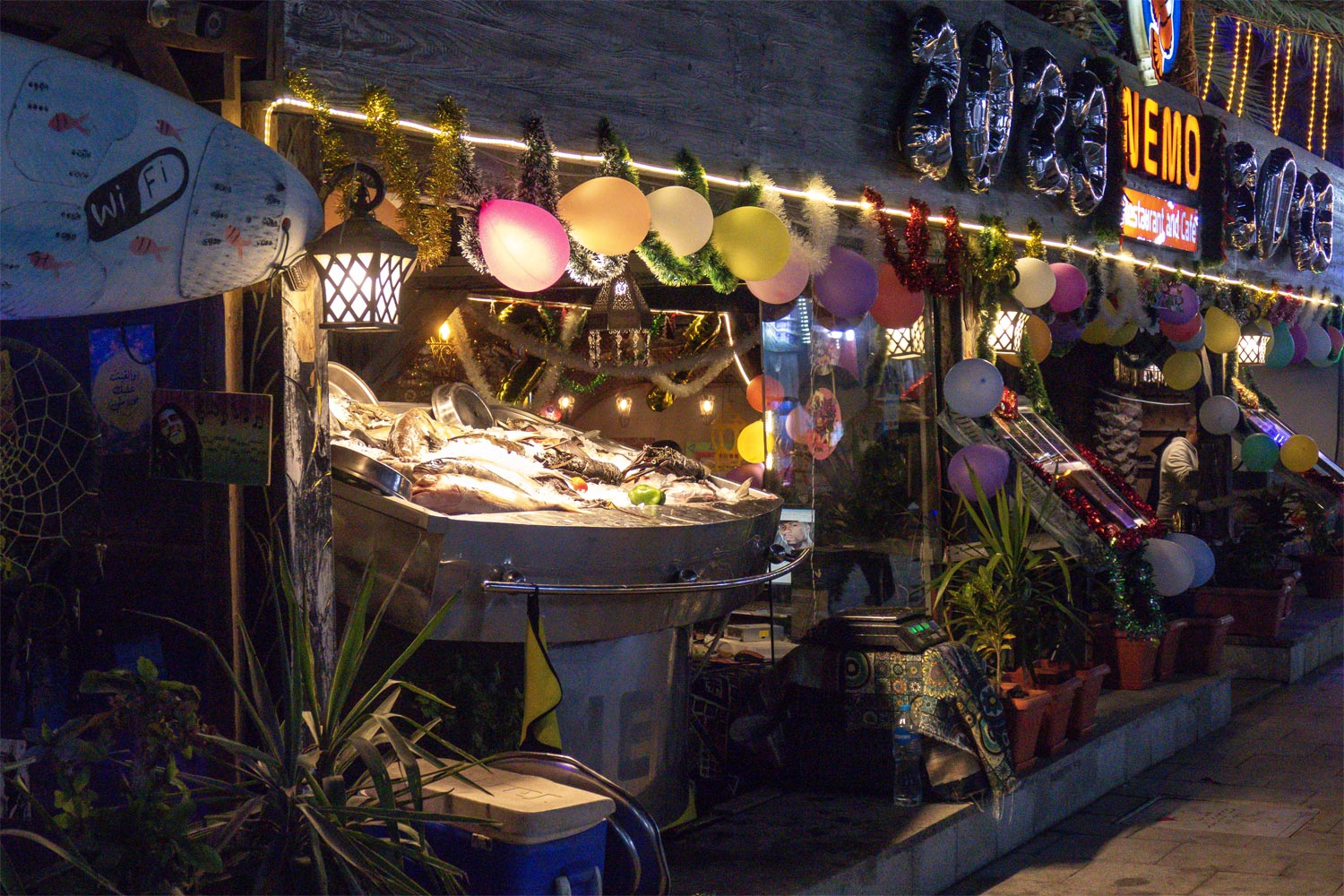
Bedouin in a tank top:

Evening chaos:

A wonderful, quiet, cozy place with pleasant and kind people.
Mount Sinai
Dahab is mentioned in the Bible as some “region of gold.” This is where the city’s name comes from: in Arabic, “gold” is pronounced “zahab.” Indeed, traces of gold have been found in the vicinity of Dahab. It may have once been a golden port.
However, the Bible also tells of a much more interesting place located not far from Dahab. Its name is known to everyone: Mount Sinai. To be precise, the Bible does not specifically mention this place. The biblical account simply refers to a mountain called “Sinai,” where Moses climbed and received the Ten Commandments from God.
By the way, Moses had to climb the mountain twice because the first commandments, inscribed on stone tables, he managed to break against the rocks: was that angry with the jews.

Back when the Bible was written, GPS hadn’t been invented yet, so the coordinates of the mountain aren’t specified in the text. What is clear from the biblical account is this: first, it says that the mountain is in the desert. Second... that’s all.
One might assume that since the mountain is called Sinai, it should be on the Sinai Peninsula. In fact, the Sinai Peninsula is named after the mountain. Since Moses led the Israelites out of Egypt and parted the Red Sea, he would have had to pass through the peninsula. It’s just not clear why would he make a detour to Dahab. To go diving?
In short, popes along with rabbis have been searching for this Mount Sinai since the 3rd century. They found at least six Mount Sinais on the Sinai Peninsula alone. Later, Islamic muftis joined the search and assured everyone that Mount Sinai is in Saudi Arabia, that the prophet Moses was actually named Musa, and that he was leading the Israelites not to Israel but to circle around the Kaaba.
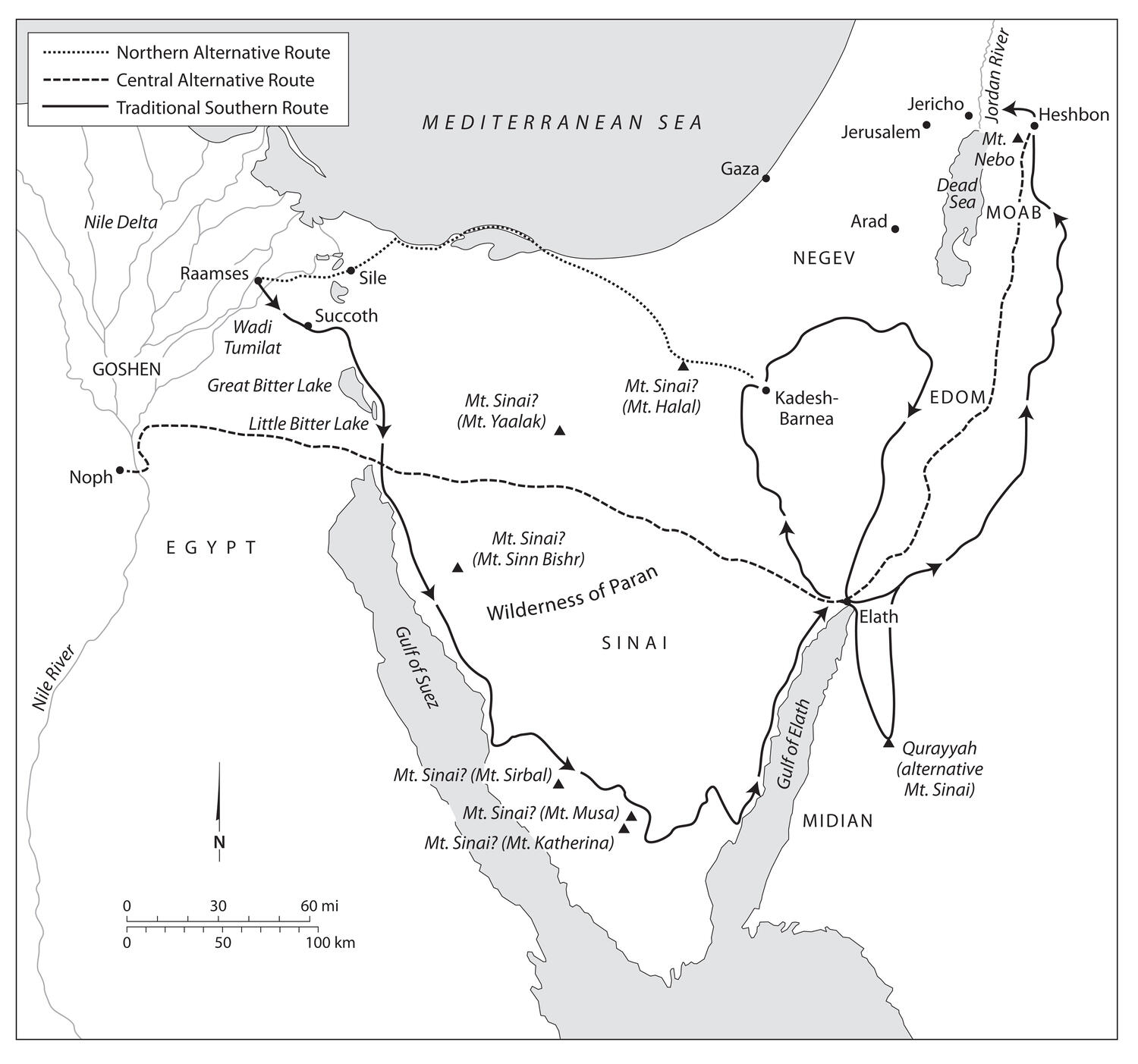
And we haven’t even discussed whether Moses actually existed and if he could have parted the waters of the Red Sea. And if he could, why was the first hydropower station on the Nile built only by Gamal Nasser?
Nevertheless, the most popular location for Mount Sinai is in the mountains near Dahab. It was designated sometime in the 4th century, and in the 6th century, Saint Catherine’s Monastery was built at its foot.
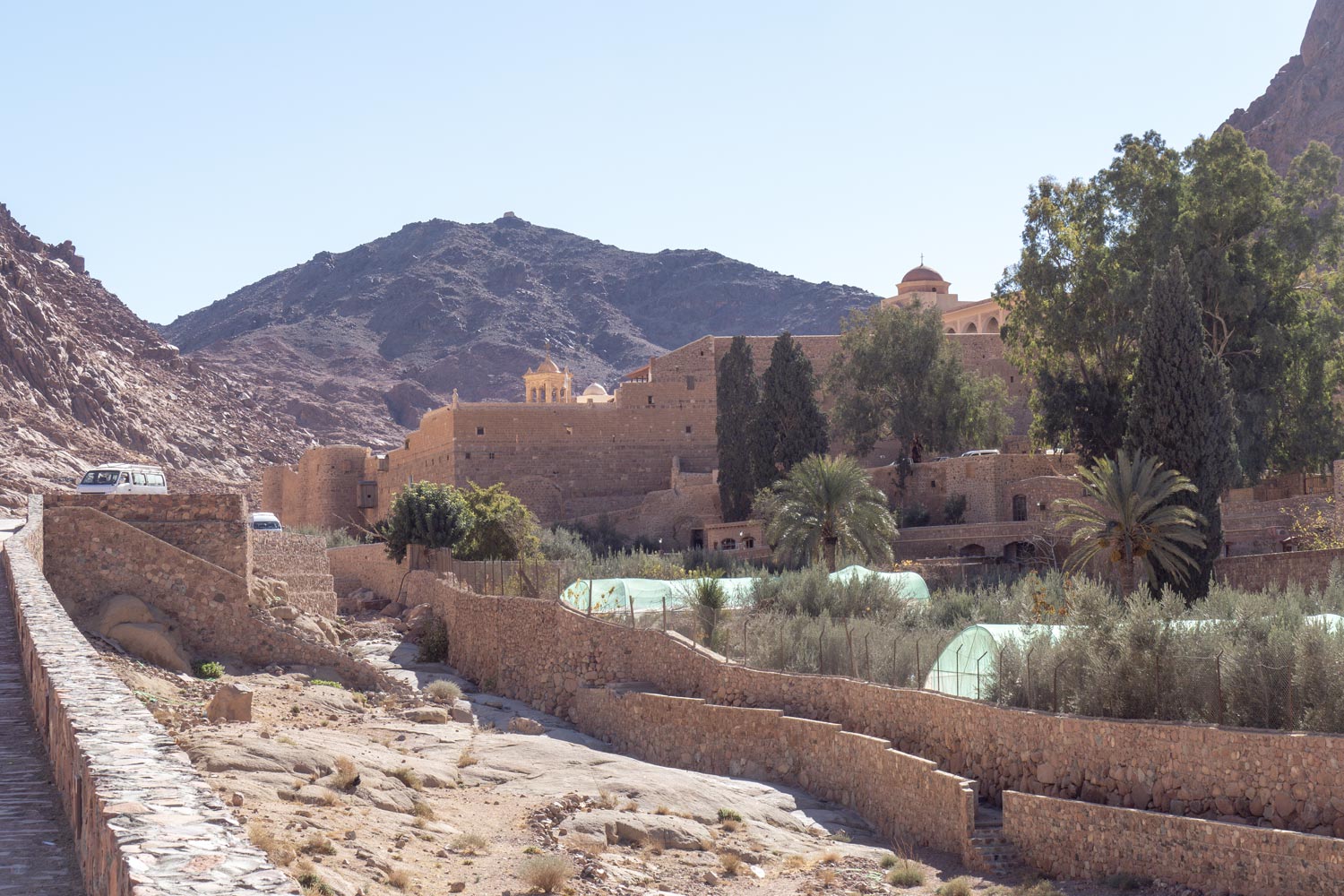
Attached to one of the monastery walls is a wooden booth. It used to serve as the entrance. A traveler would approach the wall and shout three times, “Oh, Moses,” after which a rope with a basket would be lowered from the booth. The pilgrim would place a recommendation letter into the basket, which would then be raised back up to the booth. If the letter was approved, the pilgrim was lifted himself.
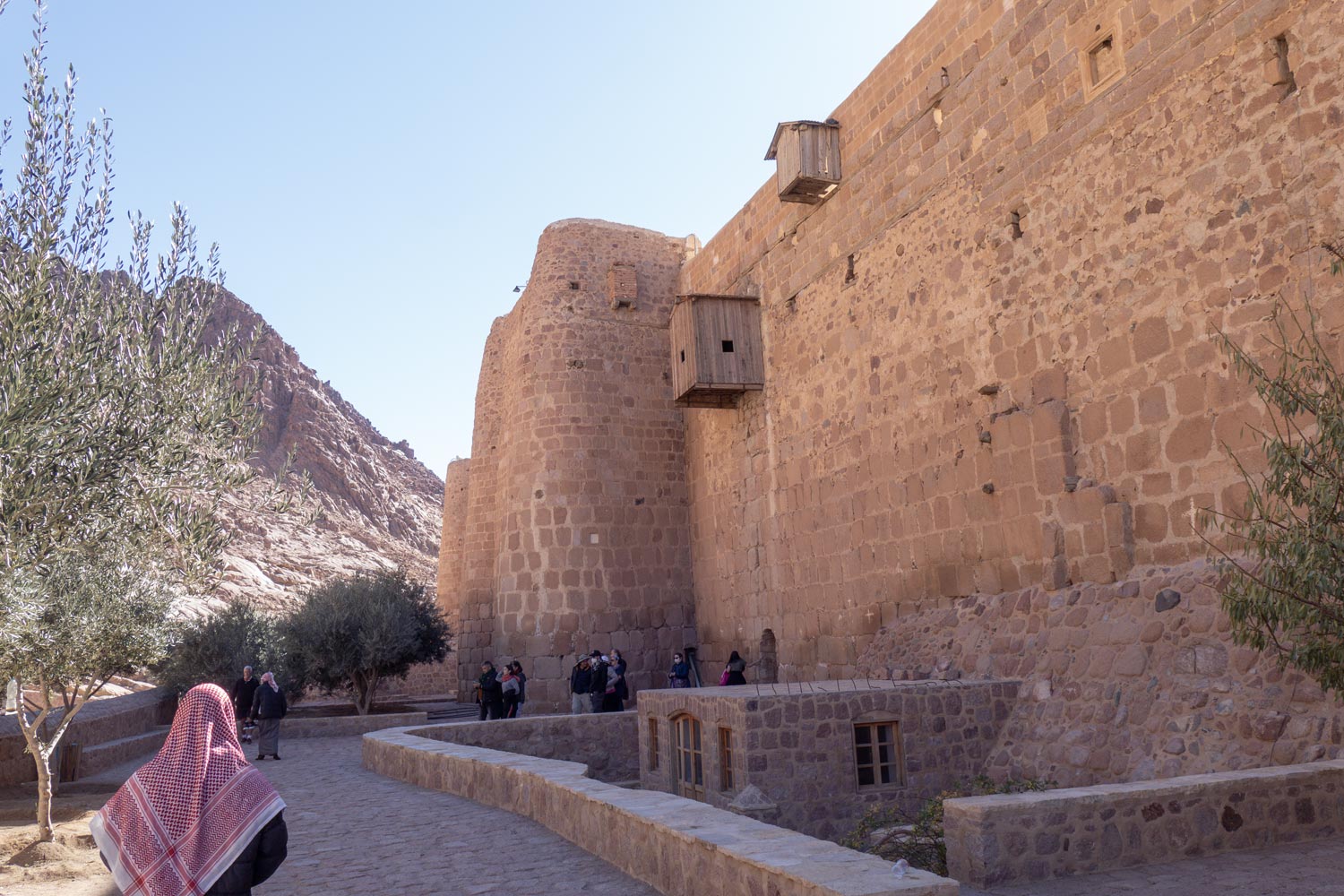
Inside, it’s like any other monastery. A beautiful chapel.

Remnants of ancient Roman mosaics.
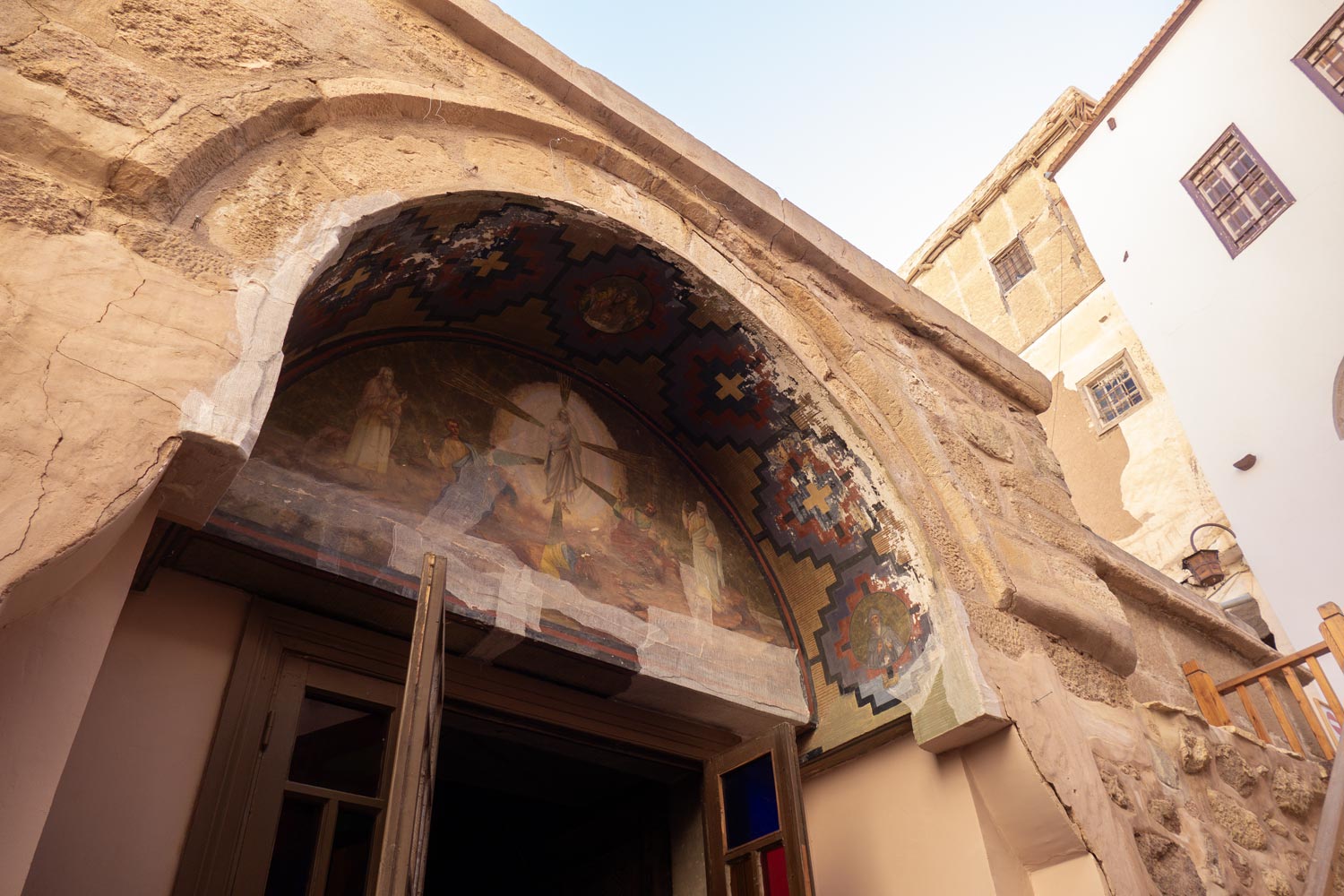
A bush that everyone takes pictures with.
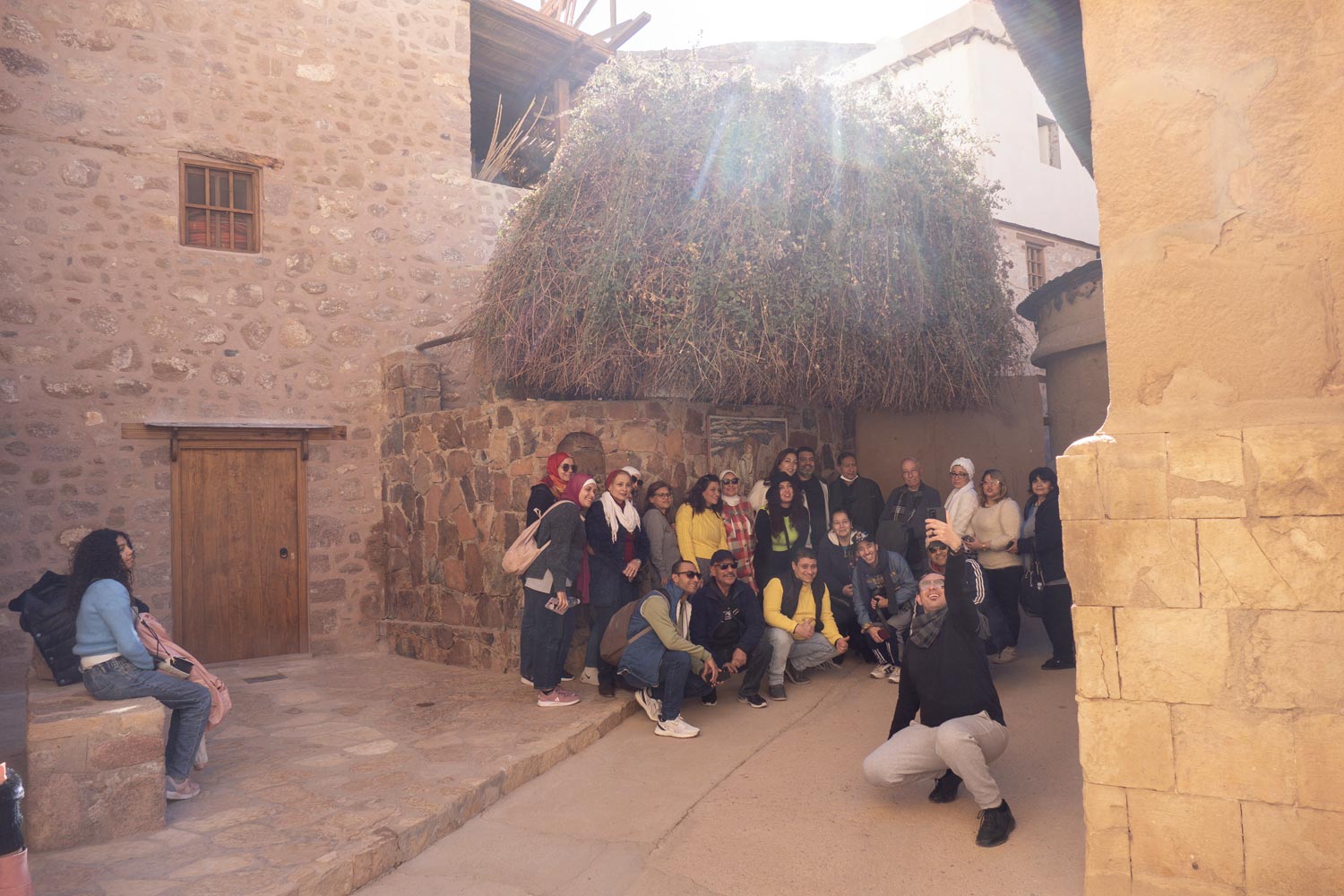
You won’t believe it, but crowds of pilgrims go to Saint Catherine’s Monastery to take a picture with a blackberry bush.
The thing is, another legend is described in the Bible. When Moses was tending sheep in the desert near Mount Sinai, he came across a bush that began speaking to him and identified itself as the Lord God. The bush commanded Moses to take off his shoes because he was supposedly on holy ground.
When the request was fulfilled, the bush explained to Moses that he must walk to Egypt, gather all the individuals of Jewish nationality who had obtained residence permits in Cairo, and persuade them to follow him into the desert in search of the “Promised Land.”
In addition to audio effects, the bush also used a visual component: it burned but never got burnt, which is why it’s described in the Bible as the “burning bush.”
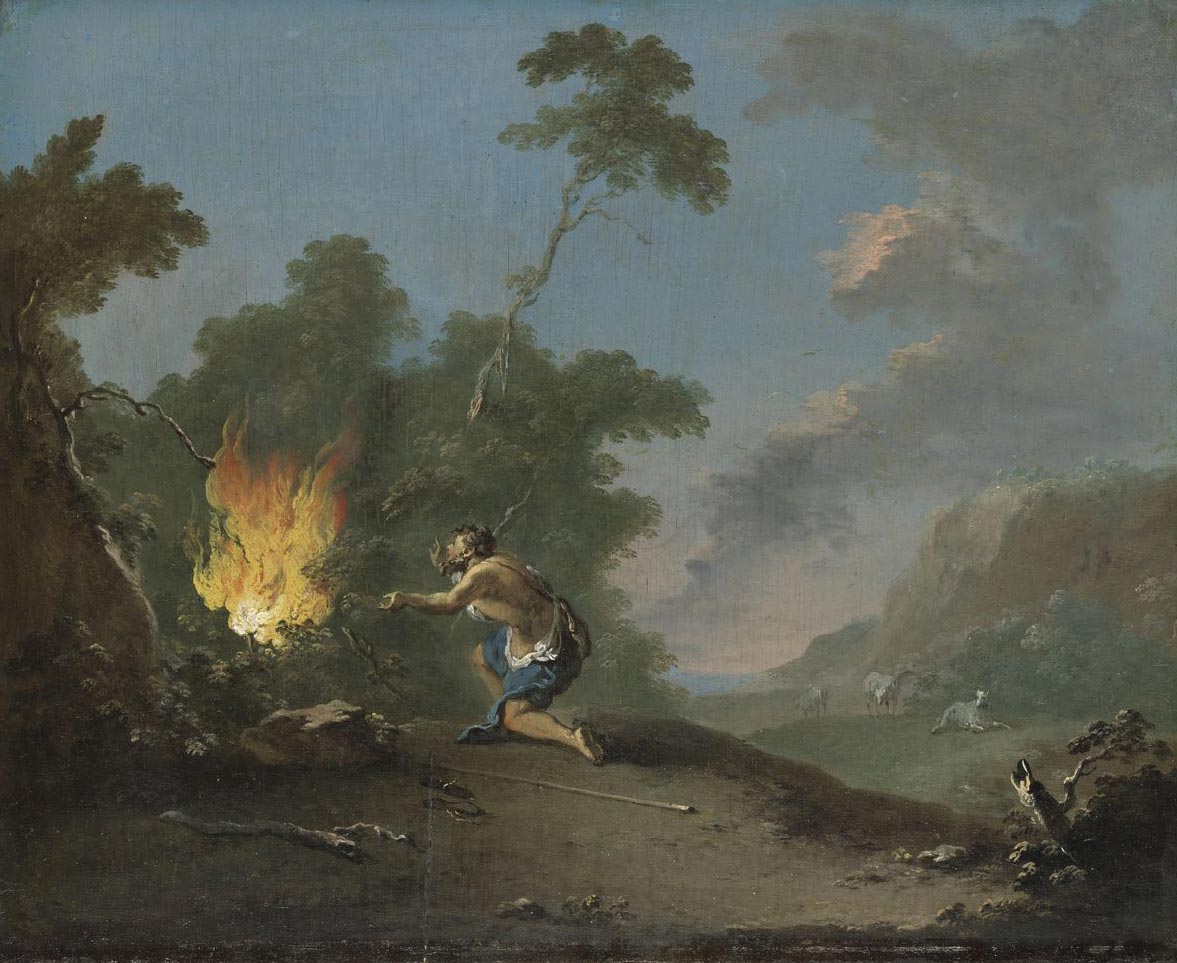
Of course, such a source of tourist revenue could not be ignored by the popes. So when Mount Sinai was identified, they planted a blackberry bush in the monastery courtyard.

In reality, a blackberry bush lives only about twenty years, and the biblical events took place three and a half thousand years ago. But that’s not a problem. According to the popes, this bush is a direct descendant of the very bush through which god spoke to Moses, propagated by cuttings. It’s possible that somewhere within the monastery walls, there is even a genealogy of the bush with a seal.
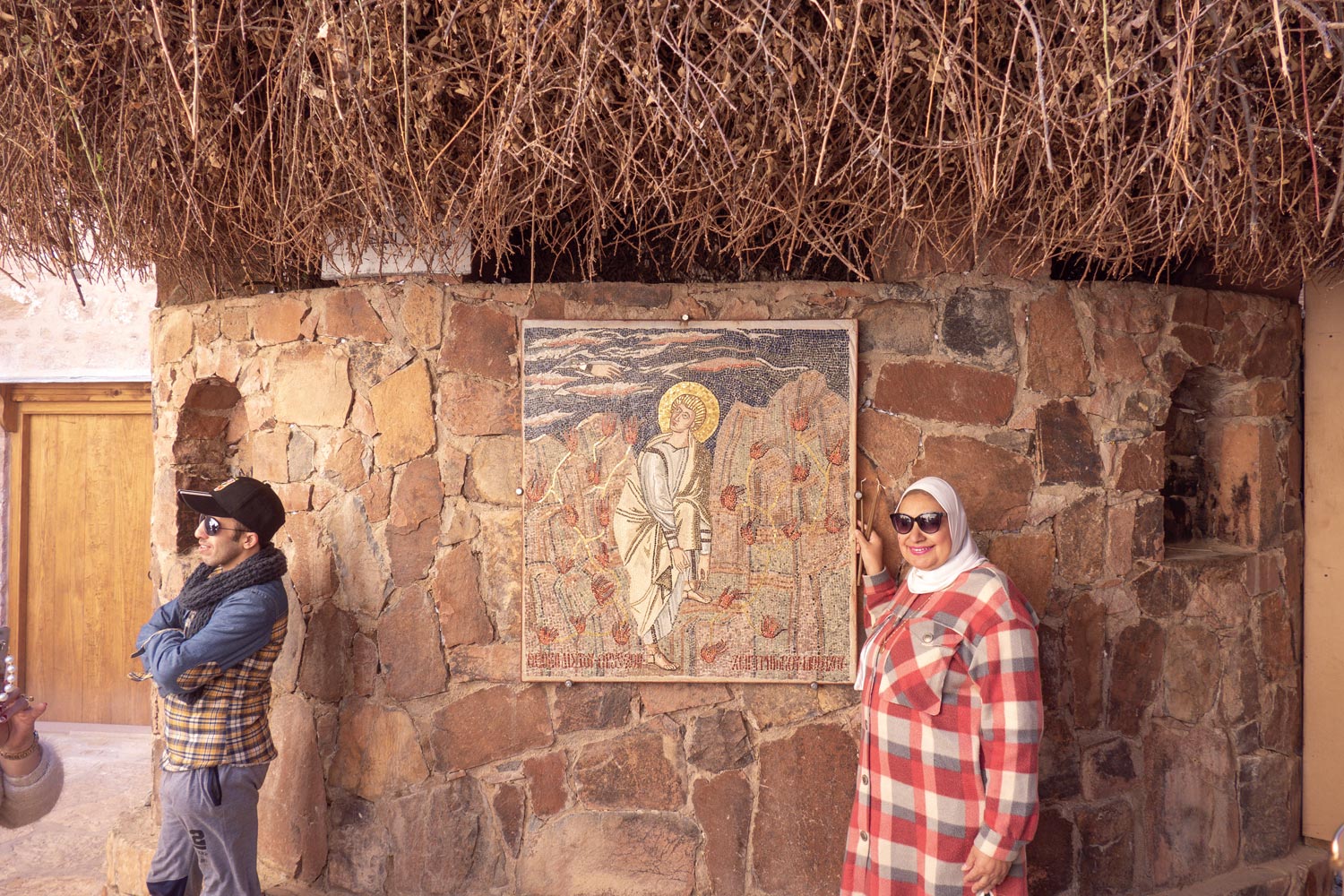
Yeah. Well, they chose a beautiful location for the monastery. It’s surrounded by mountains on all sides.
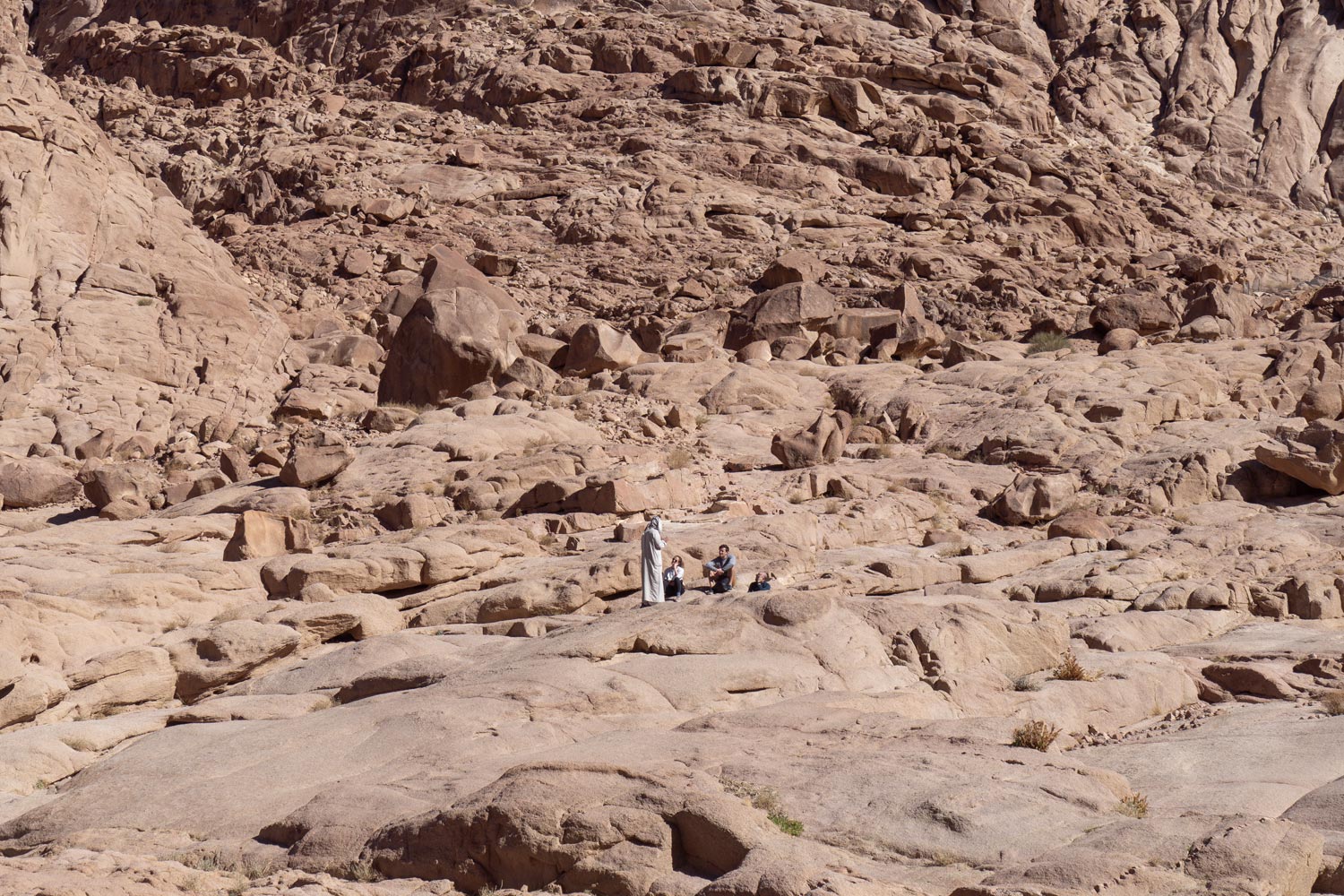
A road strewn with sharp stones leads up from it, and Bedouins guide tours along.
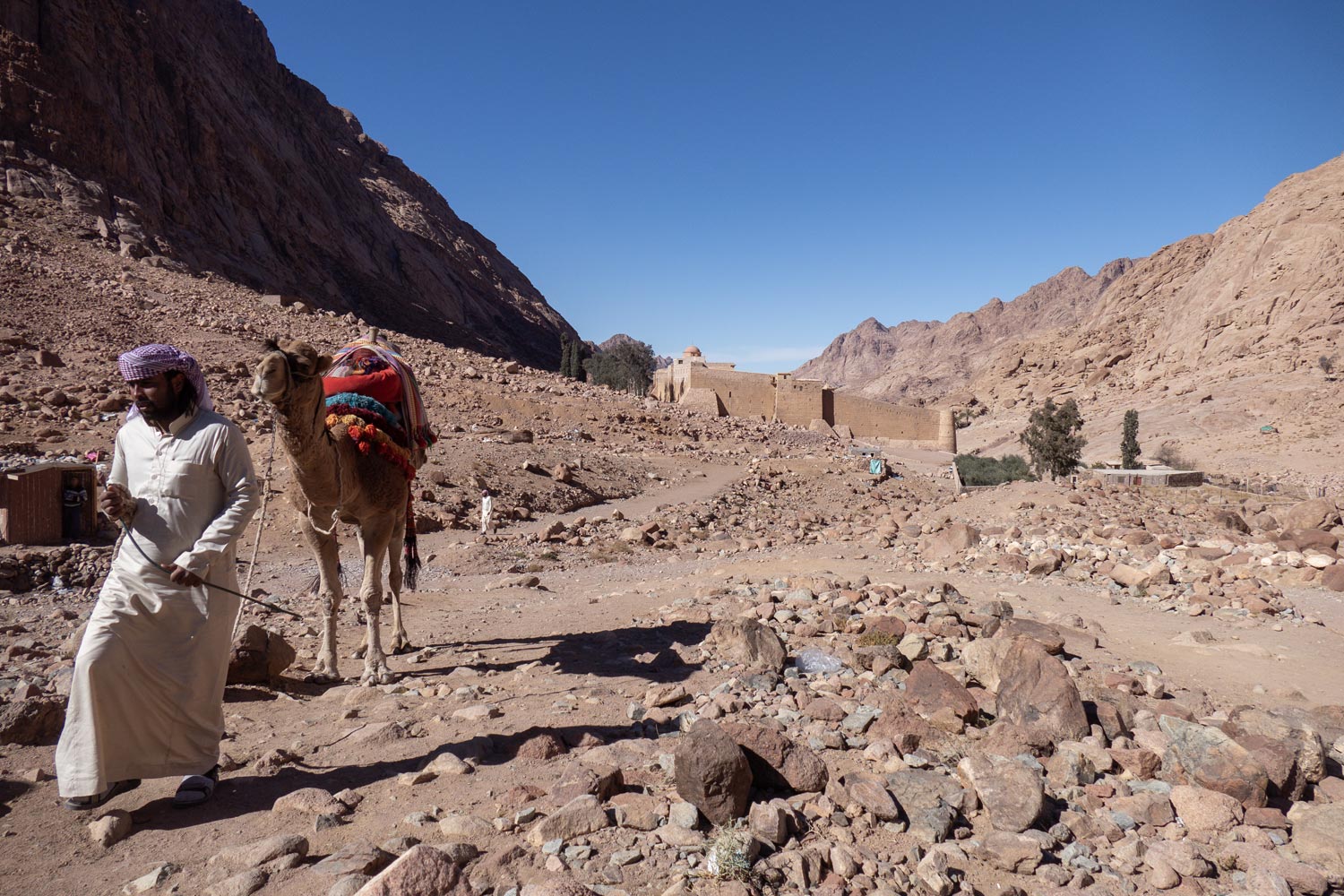
They lead far, far into the mountains while assuring along the way that one of these rocks is the very Mount Sinai.

This one:
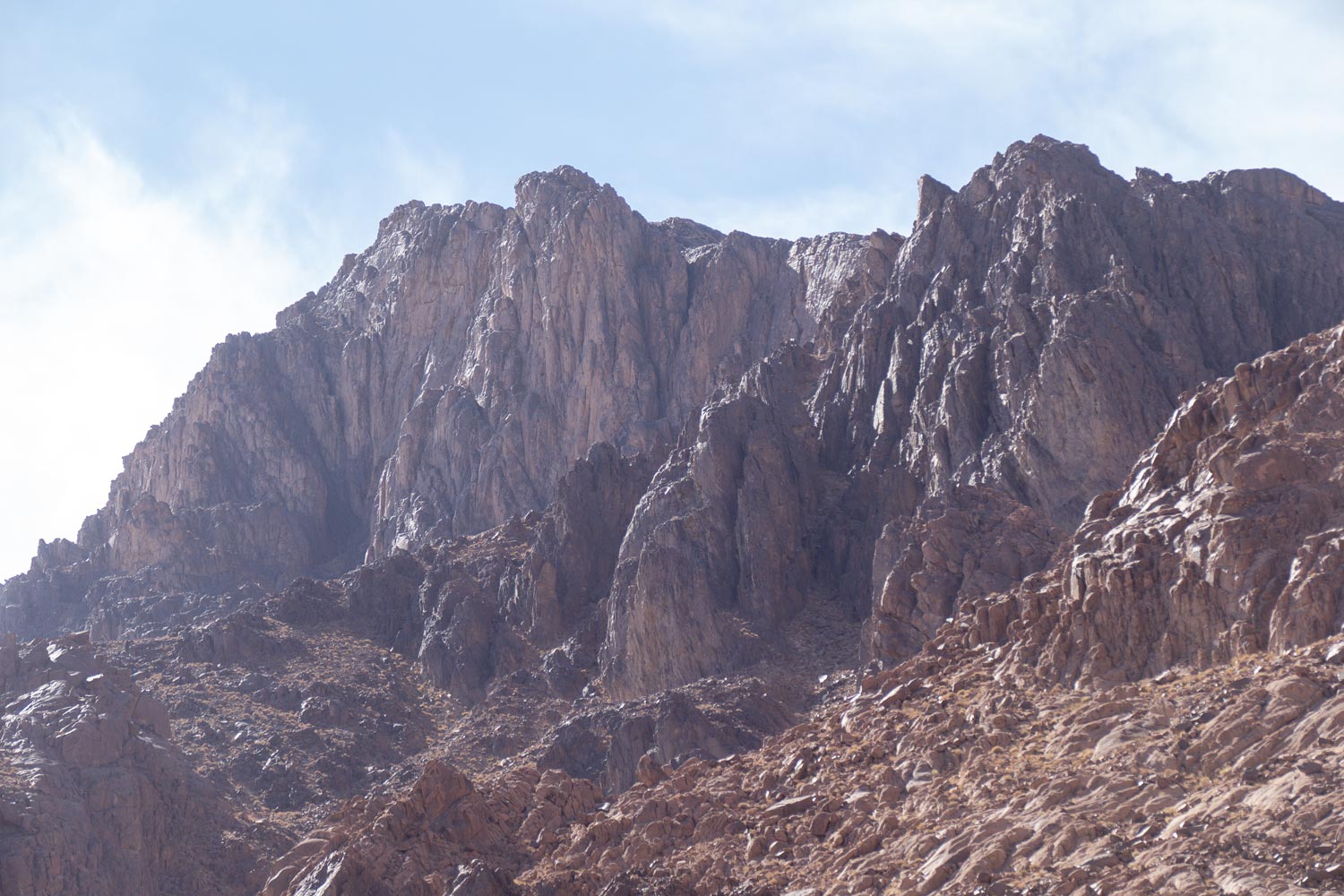
One can ascend “Mount Sinai” via two paths: a short but very steep that can only be taken during the day, or a long but gentle that will only have you returning by nightfall.
Which path shall we take?
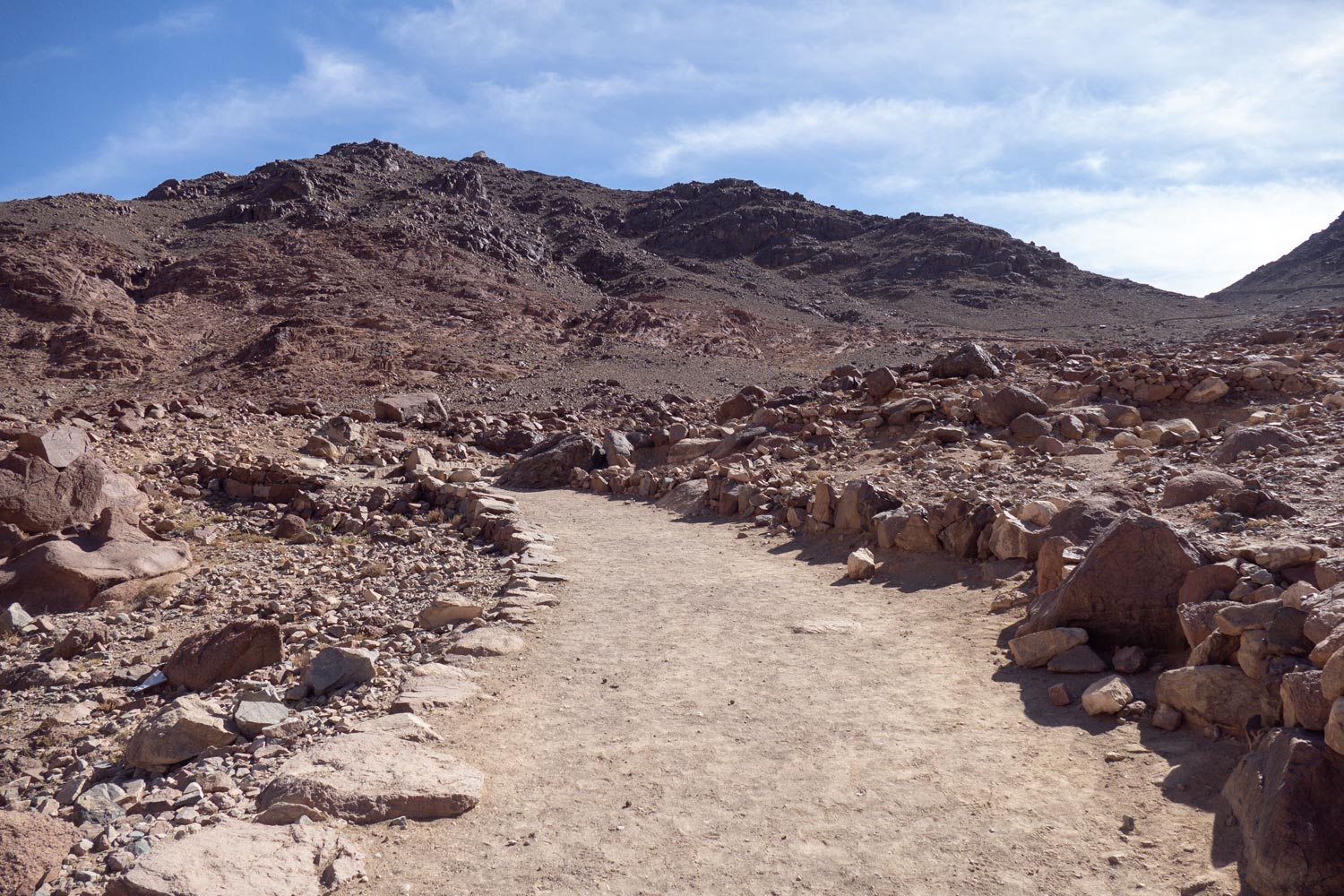
Neither. Sometimes a mountain is just a mountain.

